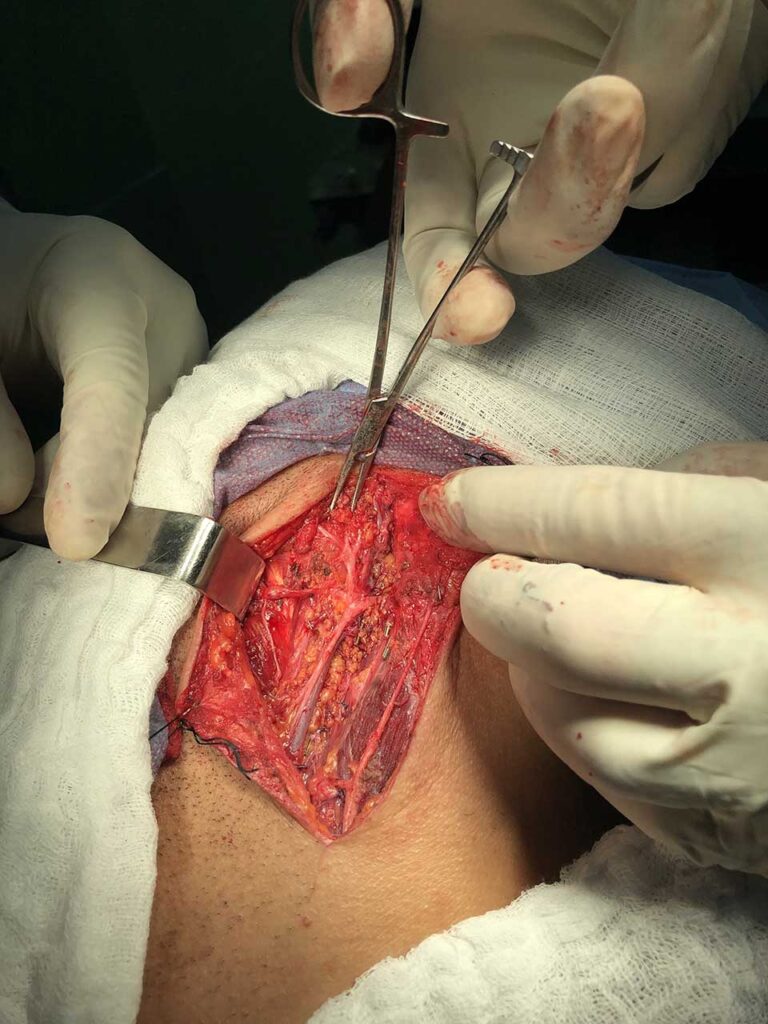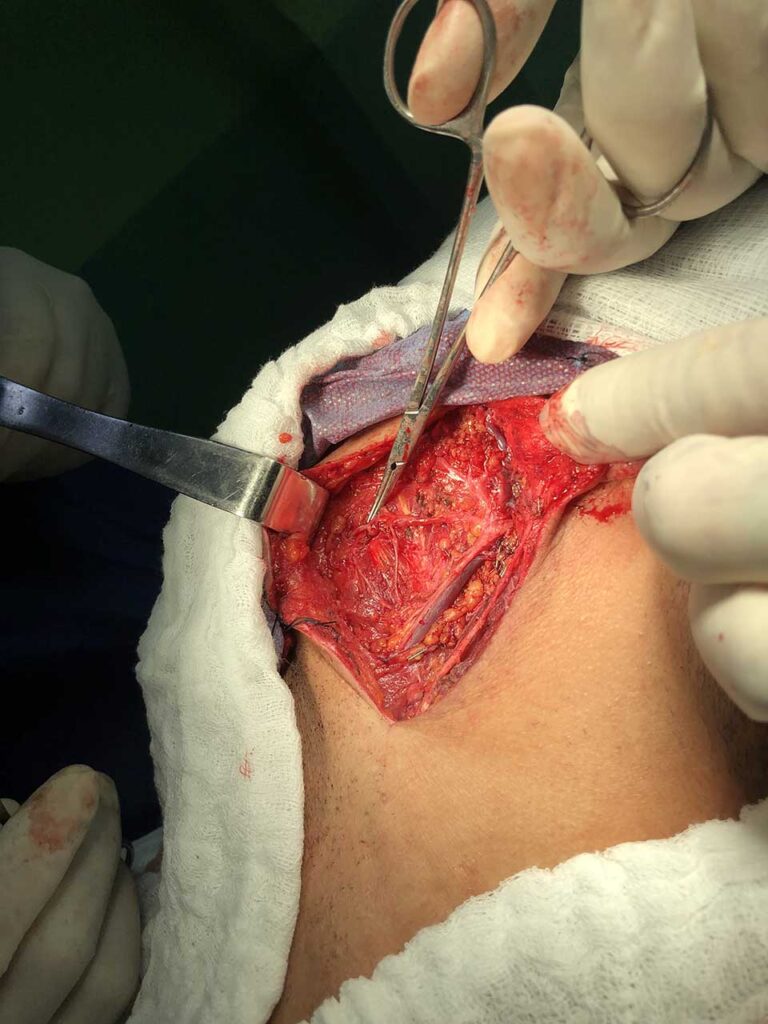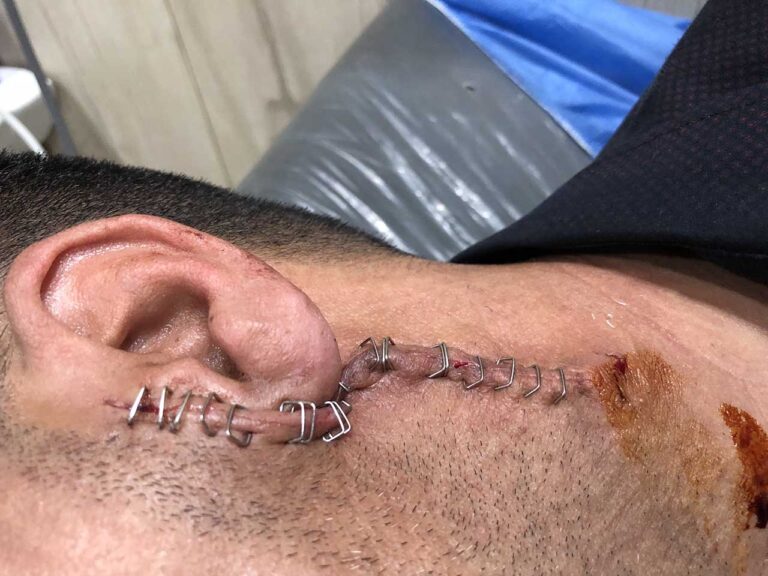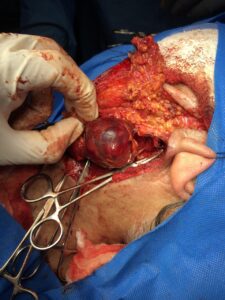Conservative Total Parotidectomy (April.2020)
Case presentation
Our patient is a 39-year-old male who presented with a left parotid mass of 2-year duration that was increasing in size over the last 4-months period. Upon examination, there was a 3 × 2 cm firm, painless, mobile mass, and facial nerve function was intact. A 2.5 cm solid lobulated mass lesion with a soft edge property in the left parotid gland was identified on MRI (fat-suppressed T2-weighted images showed mild hyperintensity, T1-weighted images showed hypointensity, and postcontrast images showed low contrast enhancement). Fine needle aspiration biopsy revealed indeterminant cytology with suspicions malignancy. Due to these findings, a left conservative total parotidectomy plus single adjacent lymph node excision had been performed.
Clinical and laboratory review for SARS – COVD-19 was negative. However all precautions for SARS – COVID-19 were taken during operation.
After histopathologic analysis, Adenoid cystic carcinoma with reactive lymph node.
Uneventful postoperative course with completely intact left facial nerve. The patient referred to oncology deportment.
Review of literature
Conservative and functional surgery in the treatment of salivary gland tumours
Guangyan Yu & Xin Peng
International Journal of Oral Science volume 11, Article number: 22 (2019)














